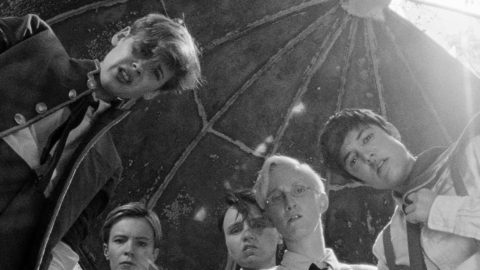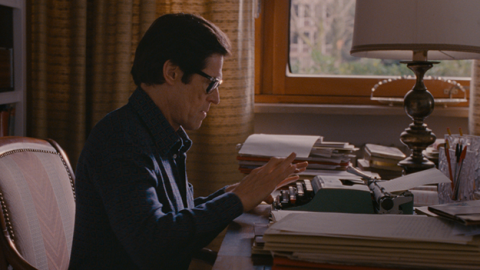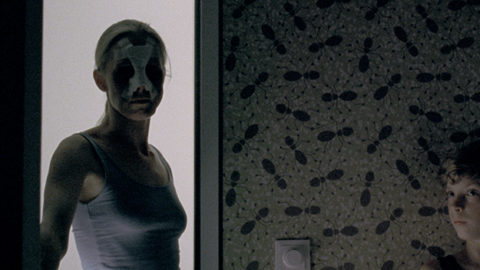Festivals: Venice 2017
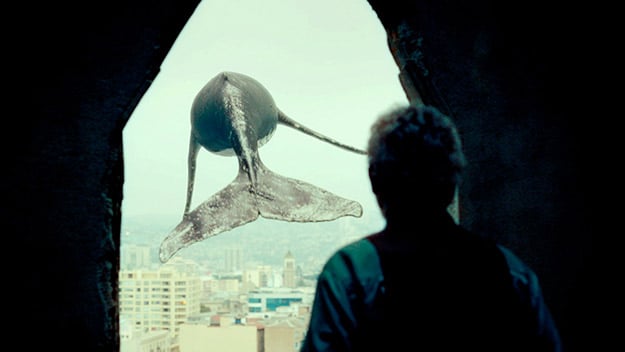
Oblivion Verses
When an independently organized sidebar upstages the main event, the programmers of a festival should start thinking about what might have gone wrong. One wonders whether the crew at the Venice Film Festival is doing just that after their selection was put to shame by the splendid debut-only spread brought out by the Venice International Film Critics’ Week (Settimana internazionale della critica): two certifiable masterpieces; five colorful treasures; one honest turkey (Diego Olivares’s boringly directed mafia thriller Veleno, the section’s closer); and one prime example of committee-guided mediocrity born from attending too many development campuses and taking too much money from too many of those production funds for “alternative” projects from Berlin to Doha (Natalia Garagiola’s Hunting Season). Not bad for a program completely dependent on what the big boys deemed expendable.
The official selection at Venice did include one film that would have looked fabulous in the Settimana: Alireza Khatami’s Oblivion Verses, a hearty, fresh-feeling piece of muted and moody magic realism reminiscent of half-forgotten 1970s/’80s nonconformists like Antonio Skármeta or Mansour Madavi, and set more by accident than design somewhere in the Spanish-speaking Americas. Originally, Khatami wanted to shoot in Iran but was prevented from doing so by the powers that be; next stop was supposed to be Turkey, but it was a similar story; only then came the demi-continent between Argentina and Mexico—Chile. What all of these countries have in common? Histories of oppressive governments, of demonstrations cut short by excessive police force, of paramilitary elements and death squads trying to get rid of corpses. That is where Khatami’s story begins: a man in a graveyard finds a body not accounted for institutionally—a graveless, nameless woman. The man’s memory, due to trauma, works in a peculiar way—he remembers seemingly everything—but he doesn’t know this person’s identity. He embarks on a journey to find that one name, so that this woman can at least rest in peace in a dignified way. Oblivion Verses made it into the big time—the “second competition,” Orizzonti—and, thankfully enough, also got noticed, but who knows whether this would have happened had it screened at the fringes.
The daring and disturbing at those fringes or anywhere didn’t lure a mainstream press caught up in Competition coverage duties and prestigious-looking, preferably star-studded Out of Competition–offerings. The 74th Venice International Film Festival was a brutally conservative edition defined by too much awful stuff from the U.S., too many self-pitying films from Israel, even less care than usual regarding cinema from East and Southeast Asia, and something bordering on contempt for Central and Eastern Europe (and it’s not as if Berlin and Cannes had already eaten up that particular cake). Barbera’s forced Hollywood Apart and Euro art-house diet little amused even the less discriminating critics, while the genuinely outstanding films in Competition got the cold shoulder. The main jury definitely did its worst: nothing for Paul Schrader’s positively outrageous exercise in Bergmaniana, First Reformed, whose seriousness, will to surprise with miracles, and uncommon radical politics made it easily the finest work around; Hirokazu Kore-eda’s ultra-classicist The Third Murder, which in the smart guise of a no-frills Japanese-style legal thriller ponders its director’s favorite question (namely, how can one act responsibly when we’ll never be able to fully understand a human being?); Marco and Antonio Manetti’s exuberant Camorra musical Love and Bullets, an off-handedly intelligent tribute to a Naples-only song-laden genre, sceneggiata, part melodrama and part comedy; or Frederick Wiseman’s once again caringly civil-minded while politically urgent Ex Libris – The New York Public Library—the last one especially shameful as it was the rare chance for an A-list competition jury to honor one of the world’s most influential and venerated living masters.
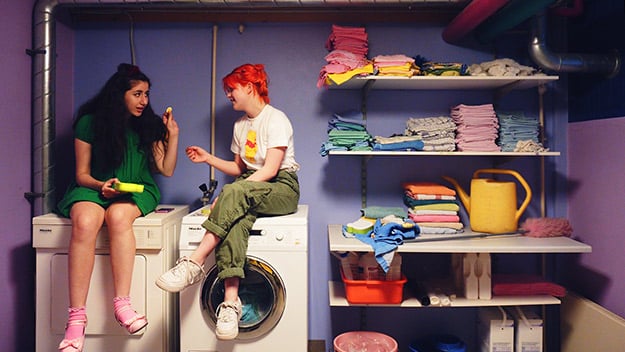
Team Hurricane
It’s not exactly as if the promise of Critics’ Week became the talk of the Lido instead. But within certain cinephile circles, consisting mainly of programmers from other festivals as well as journalists taking the longer view, the section was hot from day one. Glory was to be expected from a team that last year in their maiden voyage already signaled that things would change for a selection that had always sported one or two capital discoveries but in general felt a bit like the dumping ground for sober and sensible stuff that hadn’t quite made it into Orizzonti. Led by critic Giona Nazzaro, the Settimana looks to be a go-for-broke endeavor, courting mainly debuts aiming at the more extreme ends of the aesthetic spectrum. With a main event whose programmers love to play it Birkenstock-safe (while displaying a distressing penchant for ultraviolent misogynist melodrama), some craziness was desperately needed. What’s more, while the Competition fielded one woman director, the Critics’ Week was divvied up equally: four female and four male directors plus a mixed duo.
The Settimana’s winner, however, was not a challenging and different work. Chosen by audience ballot, Hunting Season is a whiny, art-house-normal realist story about a confused city teenager who gets straightened out by his rugged biological dad who lives in the wilderness with his new family by showing him the craft of killing animals. (And, yes, the father who brought him up is a sensitive intellectual…) It sure would be interesting to know how all those script consultants and funding committees discussed this fundamentally reactionary project. Looking at the rest of the selection one indeed wonders about this whole cosmos of filmmaking whose products take up too much space at every festival considered relevant these days. Occasionally, however, something quirky like Oblivion Verses or cheekily nutty like Emre Yeksan’s The Gulf gets through. Within the Critics’ Week, The Gulf was the quietest and most restrained among the weirdoes. Anchored in the story of a relative failure in society called Selim, Yeksan shows the way a culture does its best not to address a disaster in progress. What the disaster is we never learn for certain, but most likely it has something to do with a massive industrial fire whose cause never gets established, and potentially some hinted-at crimes related to illegal dumping of toxic waste. Seemingly by accident Selim meets a runt of a man who claims they were in the army together, but Selim can’t remember his admittedly utterly nondescript face. Does he have something to do with the monstrous stink that starts to rise after the fire, some strange cabal, maybe? Nobody knows, and more frighteningly, it seems nobody wants to know anything: instead, folks get into the habit of wearing gasmasks pretending that nothing is really wrong and soon life will be back to normal anyway. Although The Gulf does take unexpected turns and transforms from an exercise in minimalist realism into a surrealist deadpan comedy, Yeksan makes it feel aesthetically of one piece through the film’s dry rhythms and somewhat opaque-feeling images.
The Gulf was thematically a bit of an oddity considering that almost all of other Settimana films dealt with the same subject: the terrors of childhood and adolescence. The width and breadth of directorial approaches was delineated by Silvia Luzi and Luca Bellino’s Crater and Annika Berg’s Team Hurricane, with Deborah Haywood’s Pin Cushion, a creepily moving mix of Ken Loach and Angela Carter, as the selection’s aesthetic middle-ground. Like Love and Bullets, Crater is set in Italy’s deep south, and as in Love and Bullets, the local music culture is at the film’s heart. But that’s where the similarities stop: Love and Bullets is all artifice, homage, even meta-movie; Crater is a work of documentary praxis based in amateur performers playing characters that may be tailored from their own lives, and an accommodating, observation-keyed, reserved direction. The artistic roots of Crater lie in the verismo tipo of turn-of-the-19th-century Sicilian novelist Giovanni Verga and Flaubert-esque realism—two very different ways of narrating a story in a fashion that will make people say, “That’s how life really is.” The film centers on a girl, Sharon, who likes to sing; her father, Rosario, is a peddler who frequents carnivals and street fairs. Rosario wants to turn Sharon into a child star of neo-melodic music (the sound of the Italian south), but his scheme fails, predictably so, as class-immobility is at the basis of Verga’s social concerns. Then, things take a turn for the eerie when Rosario grows obsessed with Sharon’s whereabouts and installs a CCTV system in their house to spy on and tape her—bringing us into Flaubert territory, where the abyss of perversion always lurks.
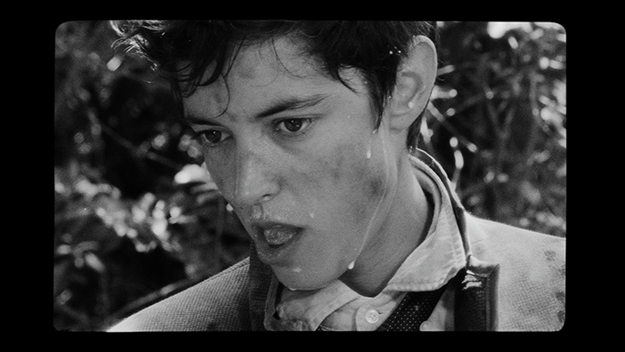
Wild Boys
The teenage girls of Team Hurricane would like to explore such depths but can’t fathom them. For all their attitude and adult posturing, their vibrator-wielding and four-letter-word-motor-mouthing, this posse feels above all clueless. Like Luzi and Bellino, Berg works with amateurs and does everything to give the impression that it’s all real—well, as real as it will ever get in a universe of almost compulsive image creation. Whereas the Italian duo is all about tightly controlled spaces, images, colors, and discrete elegance of movement, Berg goes for input overload: Team Hurricane is hyperactive, crass and garish, an all-out assault of tacky textures and emotional meltdowns. Denizens of the gallery- and museum world have seen a lot of stuff like that in recent years, making Team Hurricane very accessible for art-world crowds. But the patient and caring shall get their just reward, for Team Hurricane develops more and more into something one never saw coming: the Harmony Korine version of a Pippi Longstocking tale. Berg aims for the all-too-normal under the emo-anger façade, the bleak reality of life in neoliberalist times, and the toll it takes on some of its weakest.
For all its gaudy surface furor, Team Hurricane feels rather ordinary compared to Bertrand Mandico’s madcap The Wild Boys and Katharina Wyss’s brainily playful Sarah Plays a Werewolf. These adventures in cinema feel as if their makers are daring to gleefully reinvent all the rules of the game: in their highly individual ways, Mandico and Wyss have come up with aesthetics that are totally unique while remaining respectfully rooted in cinematic tradition. These two filmmakers provided that rarest of feelings: “I’ve never seen anything quite like this.” In the case of Mandico, the surprise was not that big if you had followed his plentiful career in shorts, for which he has won awards galore. Some might be quick to suggest Mandico’s similarities with Guy Maddin due to his new film’s wacked-out narrative, alienating use of studio sets, and brusquely outré acting. But Mandico is an avid student of Walerian Borowczyk (whose art is celebrated in his unclassifiable Boro in the Box, from 2011), and a first description of Wild Boys might be Goto, l’île d’amour by way of Hugo Pratt. Mandico himself, by the way, evokes Jules Verne and William S. Burroughs as antecedents, while the Venice catalog suggests a cinematic lineage from Méliès via Cocteau, Anger, Bava, Juran to Fassbinder. In the film, exiled teenagers are sentenced to hard labor on a shoddy ship, a punishment that keeps testosterone-crazy teenage boys from wondering about the stranger aspects of what is done to them. Sent to a mysterious island, the pesky, unruly adolescents are fed slimy black fruits (with hairy skins!), and then teased and caressed by gigantic pleasure-grasses, leaving them to their own devices until they are transformed… into young women! All the teens are played by actresses, with ever-fearless, weather-beaten Elina Löwenson leading the way. Nothing in Venice and little else in 2017 was quite as exhilarating, eye-popping, intoxicating, seductive, carefree, funky, sexy, and fun as Wild Boys.
But Venice 2017’s great revelation, the film that all alone could make the trip worthwhile was Sarah Plays a Werewolf. In Wyss’s film, a teenage girl looking for a place to unload her head full of dreams and nightmares tries her luck in a theater workshop, finds friendship not requited in the way she hoped for, makes a mess of her project, unleashes some of her hurt and despair for a few seconds at rehearsals, gets turned into a psychiatric case, and finally escapes—how and in exactly what way remains an open question in a film that is all about constantly shifting emotional states and uncertain realities. Anne Fontaine’s Reinventing Marvin, which showed in Orizzonti, tells a similar story of an artistically inclined boy, albeit over a much longer period of time and under very different social conditions; but while Marvin is the mellow and self-assured work of an accomplished storyteller and craftswoman at the top of her game, Sarah Plays a Werewolf comes off as feverish and willing to take risks, for all its formal clarity and control. The most beguiling aspect of the film is the way Wyss fuses very demonstrative, emotional acting with a direction at once precise to the last detail and split-second movement, and wild. Wyss does things few others would get away with, like changing the tone and acting style inside a given scene, changing the visual as well as emotional textures ever so finely, changing at times even the language proper (it is a Swiss film, after all). Sarah moves on dangerous ground, through a world whose feelings and reasoning she might understand but not share, one that tolerates her needs to go beyond the limits she experiences every second of the day but only as long as she stays inside the established norms for outcast behavior (there’s a rule even for breaking the rules). Yet she actually doesn’t want that much: to feel at home in her body and her life.
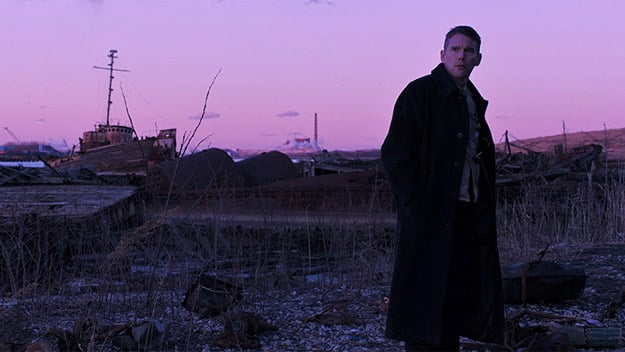
First Reformed
One wished Sarah had the chance to meet Ernst Toller of First Reformed, the minister played by Ethan Hawke. But the questioning eco-activist whom Toller meets goes the same way as the exiled left-wing German writer after whom Schrader names his main character: suicide. What happens to Sarah in the end? It looks as if she also might go down that road, too, but perhaps it is just another nightmare of hers, a dark cathartic dream intended to help her find her way back into life.
Olaf Möller is a Cologne-born and -based film critic, writer, and curator.



